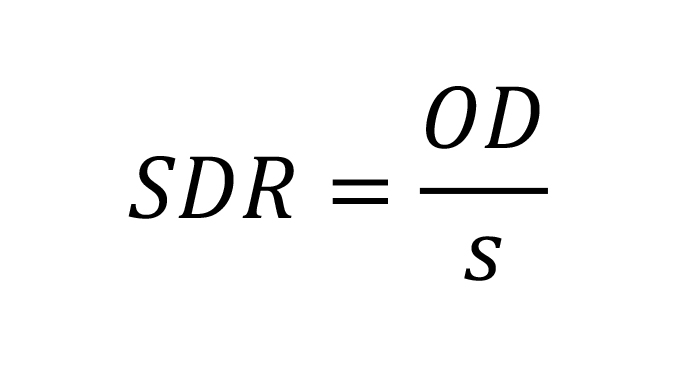Accept who you are. Nowadays, we are encouraged to accept everyone for who they are whether we like them or not; and that pretty much goes for everyone. Just as there are differences among people, there are many differences among the piping and components used to build plumbing systems. While plumbing engineers design systems that allow people to live and work in the spaces architects plan, the plumbing contractors are the ones that ultimately need to put it all together and make sure it works.
Contract documents typically consist of drawings and specifications, at a minimum. The drawings are where we put all of those lines and circles. The specifications, also known sometimes as the project manual, are the “wordy” documents that tell the contractor what types of materials to use. Piping comes in a wide variety of materials: Copper, steel, cast iron and plastics. Most of us are familiar with copper piping used to convey gases and water. Cast Iron is another stalwart material that was the standard drainage piping for decades. Then, there is steel piping used for fire protection and natural gas.
All of these pipes, and their associated fittings, are manufactured using different techniques. This is one of the reasons they all come in different sizes based on standard dimensions that are determined by organizations such as ASME (American Society of Mechanical Engineers), ASTM (American Society for Testing and Materials), and the AWWA (American Water Works Association). Prior to the development of these standards organizations, pipe dimensions appear to have been more general, designated as IPS or “iron pipe size.” With the IPS system, pipes were manufactured to the approximate inside diameter of the pipe. Variations in wall thickness and pressure rating were as simply described as “standard,” “heavy” or “extra heavy.”
One of the most common types of piping we see is copper. Copper pressure piping is manufactured in four common types: K, L, M and DWV. These different types represent a shift dimensionally from the IPS system in the way that sizes are determined by the outside diameter as opposed to the inside diameter. The designations determine the wall thickness, which in turn, determines how much pressure the pipe can handle, with type “K” being the thickest and “DWV” (drainage, waste and vent) being the thinnest, not even suitable for pressure applications.
Copper piping type standards go back to the development of code standards. The subtle dimensional differences are important to account for in the field when contractors are putting a network of piping together.
Another term used for pressure piping, particularly plastic types, is SDR. SDR stands for “standard dimensional ratio.” While other pipe systems generally related different classes to wall thickness and pressure rating, SDR is defined by the outside pipe diameter divided by the wall thickness of the pipe:

Where “OD” is the outside pipe diameter and “s” is the wall thickness. As the wall thickness increases, the SDR decreases. From this equation, we can tell that piping with lower SDR values will have higher pressure ratings.
The original standard for manufacturing pipe started with IPS. This was superseded by terms that we are more familiar with today, including NPS, which stands for “nominal pipe size” and SCH, which designates pipe schedule. The difference between the antiquated IPS and the more recent NPS is that the latter is based off of the outside diameter. This appears to be an improvement in standards since pipe connectors (i.e. fittings) are put together based on the outside diameter. So, instead of manufacturing pipe based on an inside diameter and creating different wall thicknesses, piping is manufactured to a standard outside diameter and the wall thickness goes inward.
As opposed to the old method of standard, heavy or extra heavy, there are more than 15 different pipe schedules. In plumbing, we are most familiar with Schedule 40. Sometimes, Schedule 10 will be specified for larger fire protection piping. Schedule 80 may be specified for high pressure or temperature applications. When it comes to pipe thickness, the engineer and contractor has to also consider the method of connecting the pipe with fittings. Thinner pipe may not be feasible to connect with “cut grooves,” and thicker pipe may not work with “rolled grooves.”
Copper piping type standards go back to the development of code standards. The subtle dimensional differences are important to account for in the field when contractors are putting a network of piping together.
Admittedly, being an engineer, I don’t get into the finer tolerances of pipe dimensions. The most common dimensional challenge we see is getting storm and sanitary piping to fit in walls. The software we use to design systems makes it fit quite nicely, but once we realize that a 4-inch pipe with a coupling is bigger than 4 inches, and a 4-inch wall actually has less than 4 inches of cavity space available, there is a problem.
If you are the person designing those lines and circles on drawings, I’d encourage you to dig into specifications and learn about the different types of piping that are used for various applications. If you are the engineer reviewing submittals for a job, take the time to understand that alphabet soup of standards organizations. Some engineers that we call colleagues even work in their spare time to help develop those standards as new materials are developed. Kudos to them.
Contractors and manufacturers are probably the most familiar with the materials that are specified as they put their hands on them. They are the ones that test the piping, solder, braze, thread and weld it.
Engineers and the code determine which type of pipe gets used for different applications. Each of these types of piping may have differences in dimensions to account for a variety of pressure and corrosive properties. As the diversity of piping and materials becomes more and more accepted in our built environment, it is important for the organizations and associations we have relied on for decades to maintain sound standards of performance. This guidance will allow manufactures to better integrate their products with one another. Many times it comes down to the plumbing contractor in the field to make it all work.



